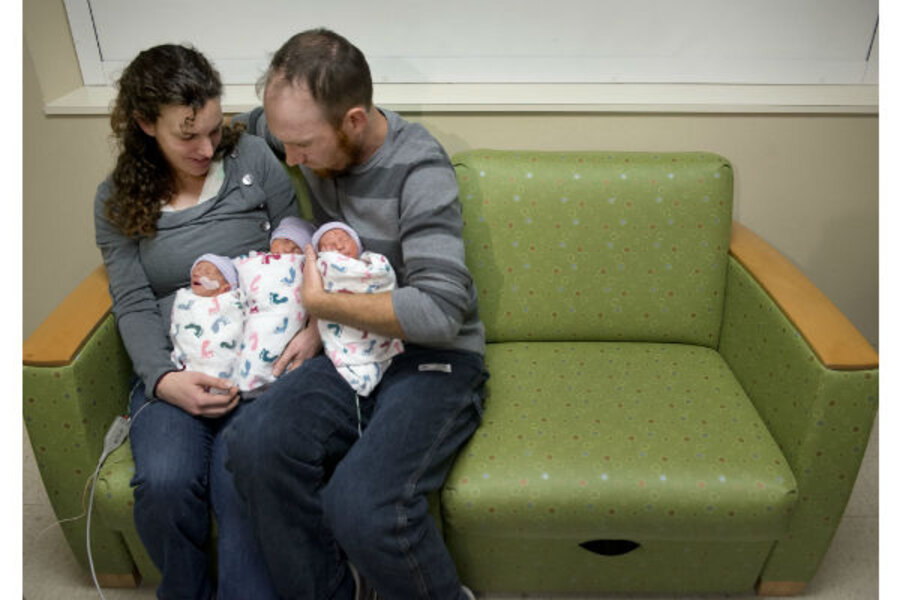Identical triplets: A rare California birth
Loading...
According the Sacramento Bee newspaper, doctors have announced that a couple gave birth in late November to a set of naturally conceived identical triplets.
The newspaper reports that Hannah and Tom Hepner of Quincy, Calif., welcomed daughters Abby, Brin, and Laurel on Nov. 22 at Sutter Memorial Hospital in Sacramento, Calif. The triplets combined weight was just under 11 pounds, with their individual weights ranging from just over 3 pounds to 4 pounds.
According to Dr. William Gilbert, director of Sutter Women’s Services, the odds of producing identical triplets without fertility drugs range from 1-in- 1-million to 1-in 100 million.
The rarity of identical triplets (produced when a single fertilized egg splits into three in utero) conceived naturally makes it hard to accurately calculate the frequency of such births.
In June, a West Allis, Wis. couple, Laura and Kevin Stier, also welcomed identical triplet girls. According to the local FOX affiliate in Milwaukee, the girls – Hannah, Norah, and Lucy – had a combined birth weight of less than seven pounds. The girls were released from the hospital in October.
While naturally conceived triplets are something of an anomaly, multiple births occur much more frequently as a result of in vitro fertilization treatments.
A new study published in the New England Journal of Medicine released yesterday found that “a total of 36% of twin births and 77% of triplet and higher-order births resulted from conception assisted by fertility treatments.”
The last report of a woman giving birth to triplets conceived without fertility treatments in the United States was in June. According to the local FOX affiliate in Milwaukee, the West Allis, Wis., couple gave birth to three girls, Hannah, Norah and Lucy, who had a combined birth weight of less than seven pounds. The girls were released from the hospital in October.







